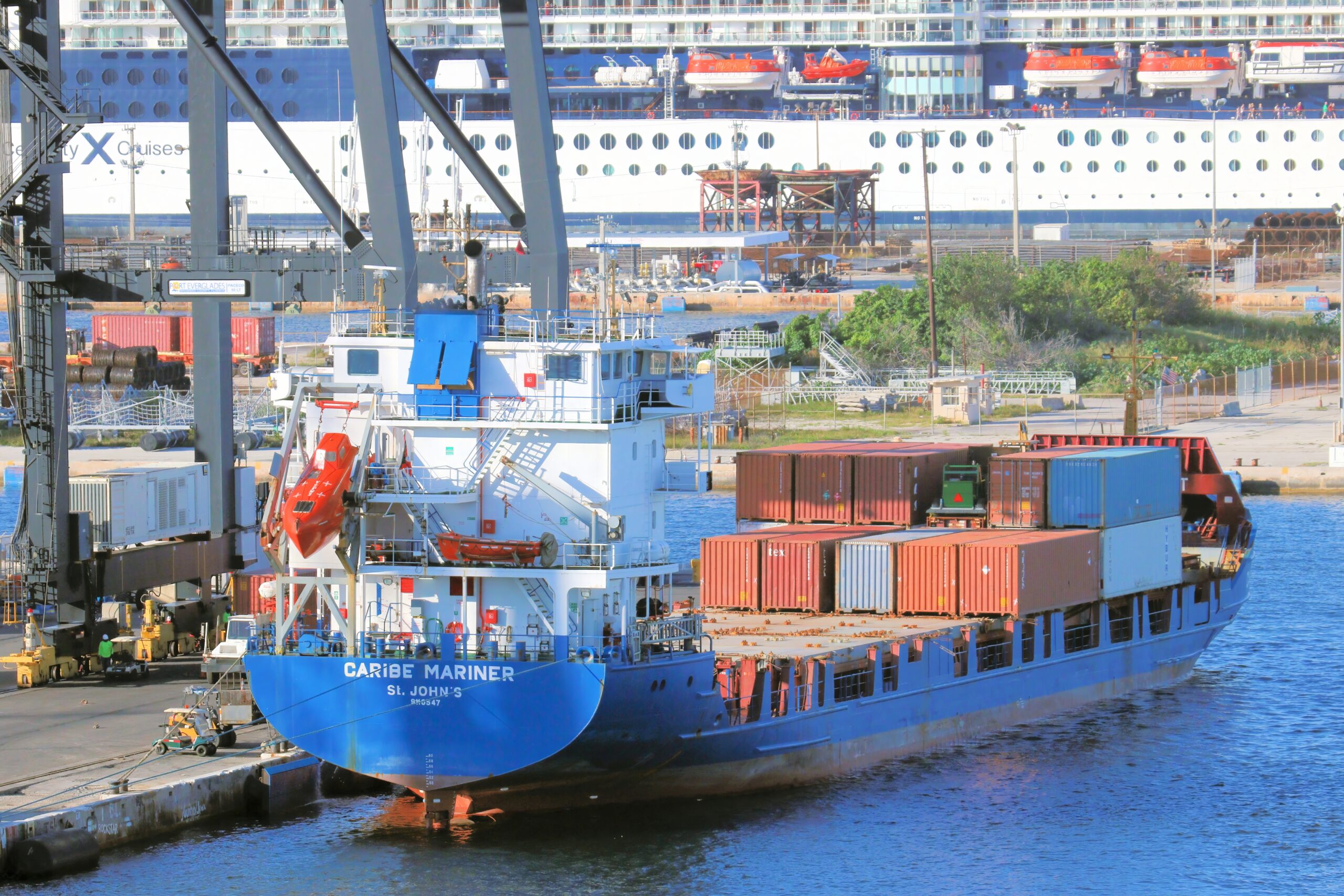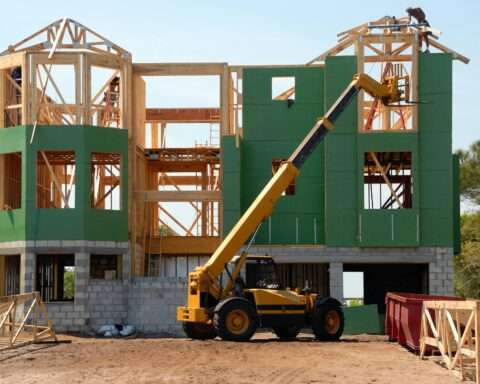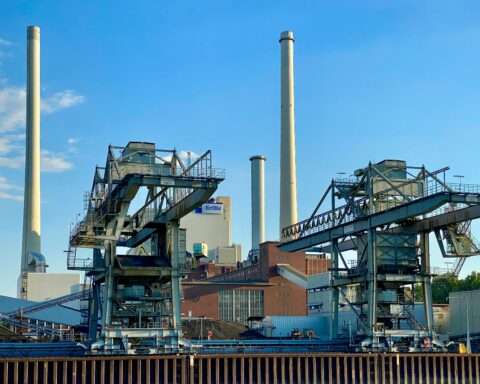The U.S. Department of Transportation’s Maritime Administration (MARAD) is announcing an investment to advance dozens of port improvement projects to upgrade coastal seaports’ capacity, efficiency and operations.
MARAD will invest $577 million in grants for the nation’s ports to improve supply chain resilience, develop port workforce opportunities and enhance freight safety, operations and emissions output. The funding will be sourced from the administration’s Port Infrastructure Development Program (PIDP), a $2.25 billion federal grant program tasked with strengthening America’s supply chain after the COVID-19 pandemic.
RELATED: US ports receiving $3 billion for zero-emissions equipment and infrastructure upgrades
These federal grants will support coastal seaport projects to improve maritime freight operations in 15 states and one U.S. territory. These ports plan to develop a series of innovative projects that are poised to lower the cost of everyday items, speed up the movement of trade goods and mitigate future environmental damages.
Through these PIDP grants, MARAD will advance both large and small seaport projects with maximum awards of $53.5 million and $11.5 million, respectively.
The single-largest grant in the round, $53.5 million, will be awarded to the Puerto Nuevo Wharves Reconstruction and Resilience Project in San Juan, Puerto Rico. This project will modernize critical infrastructure at the Puerto Nuevo Docks in the Port of San Juan, including the installation of fender systems and bollards, the demolition of existing platforms and the construction of two new wharves.
Florida’s Broward County will secure a $53.3 million grant to advance the Port Everglades Regional Port operations with Emission Reductions Project. This multifaceted initiative will purchase a variety of hybrid and electric vehicles, develop a workforce program and create a port and maritime electrification plan to include electrical system upgrades and charging station infrastructure.
Broward County’s port project will also construct additional high mast lighting, utilize optical character recognition at the Crowley terminal gate and build a concrete rubber-tired gantry run for cranes at the Port Everglades terminal.
The Cargo Terminal 1 Replacement Project in Anchorage, Alaska will utilize a $50 million PIDP grant to improve capacity and efficiency at the Don Young Port of Alaska. The grant will support the demolition of an existing terminal, development of trestle and wharf infrastructure, the construction of a new general purpose terminal and related landslide facilities and utilities.
The remaining large seaports that will secure PIDP funding are listed below:
- Garden City, Georgia – $49.88 million to the Garden City Terminal Power Resiliency Project. The project will create a self-contained on-terminal power distribution network to reduce reliance on local utilities.
- Oakland, California – $49.51 million to the Outer Harbor Terminal Infrastructure Modernization Project. The project will strengthen wharfs and conduct structural repairs for various aspects of the Outer Harbor Terminal.
- Hennepin, Illinois – $38.58 million to the Hennepin Barge Terminal and Soybean logistics Asset Project. The project will build a new loading dock, conveyor systems and storage systems for soybean meal, soybean oil and soybean hulls.
- Chicago, Illinois – $34.5 million to the Landing Dock Safety and Efficiency Project. The project will rehabilitate thousands of feet of rockwall, develop about three new crane pads and add approximately 1,700 of new rail spur at the Iroquois Landing Terminal.
- Houston, Texas – $25.35 million to the Agricultural Export Improvement and Community Resilience Project. The project will expand stormwater capacity infrastructure for the Port of Houston and surrounding community through the first phase of a drainage improvement project. The project will additionally expand a grain elevator at the port’s turning basin.
- Morehead City, North Carolina – $14.92 million to the Modernization and Revitalization of Barge Berths Project. The project will construct new sheet pile bulkheads in front of existing bulkheads at the Port of Morehead City’s barge berths. The project also includes upgrading hardware and refurbishments to supporting infrastructure.
- Tacoma, Washington – $11.64 million to the Pierce County Terminal Efficiency Project. The project will convert all lighting to LED lights, install reefers on power infrastructure racks for almost 200 refrigerated containers and rebuild the terminal transfer zone.
- New Haven, Connecticut – $11.17 million to the Port Rail Access Improvements Project. The project will add two new railyards and over a mile of new railroad track in the New Haven Terminal.
Several small coastal seaports will also benefit from this round of MARAD grants.
One of these projects, awarded the maximum grant of $11.25 million, is the Parade Street Slip Dock Wall Replacement and Slip Widening Project. Led by the Erie-Western Pennsylvania Port Authority, the project will construct a 406-foot stone breakwall to protect an existing ferry dock and a new stand-by ferry berth.
Another small port project in Oswego, New York, Warehouse Modernization, will utilize a max program grant to replace an existing warehouse with a new, climate-controlled facility. The project will also install a backup generator, procure two material handlers and replace an existing guard house at the Port of Oswego.
The other small seaports that will receive PIDP grants:
- Davisville, Rhode Island – $11.25 million to the Gateway Upgrades for Access, Resiliency & Development at the Port of Davisville Project.
- Kodiak, Alaska – $11.25 million to the Saint Herman Harbor Moorage Expansion Project.
- Dillingham, Alaska – $11.25 million to the Port of Dillingham Improvements Project.
- Mount Vernon, Indiana – $11.24 million to the Mount Vernon Port Transload and Railyard Project.
- Juneau, Alaska – $11.15 million to the Aurora Harbor Drive Down Float Project.
- Saint Paul, Alaska – $11.02 million to the City South Dock Renovations and New Berthing Dolphins Project.
- Bellingham, Washington – $10.97 million to The Lummi Nation Fisherman’s Cove Dock Replacement Project.
- Palmetto, Florida – $10.37 million to the Berth Reconstruction Engineering and Permitting Project.
- Put-in-Bay, Ohio – $10.37 million to the Breakwater for Main Ferry Terminal Project, Phase 1.
- Chippewa County, Michigan – $10.15 to the Drummond Dolomite Ship Loader & Sea Wall Improvements Project.
- Hoonah, Alaska – $9.43 million to the Marine Industrial center Cargo Dock Project.
- Hardin, Illinois – $9 million to the Hardin Illinois River Terminal Elevator Project.
- Port Angeles, Washington – $9 million to the Operational Capacity Expansion Project.
- Crescent City, Alaska – $8 million to the Citizens Dock Replacement Project.
- Anacortes, Washington – $7.4 million to the T Dock Reconfiguration Project.
- Neah Bay, Washington – $5.5 million to the Port of Neah Bay Modernization and Marine Highway Initiative.
- New London, Connecticut – $3.92 million to the Cross Sound Ferry Terminal Infrastructure Improvements Project.
- Harlingen, Texas – $708,750 to the Port of Harlingen Resiliency and Asset Management Planning Project.
A comprehensive list of all awarded small and large seaport projects is available here, including project descriptions and PIDP’s FY2024 grant allocations.
MARAD anticipates this investment will complement the U.S. Environmental Protection Agency’s $3 billion Clean Ports Program, collectively delivering funding opportunities for zero-emission equipment and infrastructure to reduce greenhouse gas emission in the nation’s port operations.
“Modernizing America’s port infrastructure is essential to strengthening the multimodal network that supports our nation’s supply chain,” Maritime Administrator Ann Phillips said in a press release. “Approximately 2.3 billion short tons of goods move through U.S. waterways each year, and the benefits of developing port infrastructure extend far beyond the maritime sector.”
Photo courtesy ImagePerson













